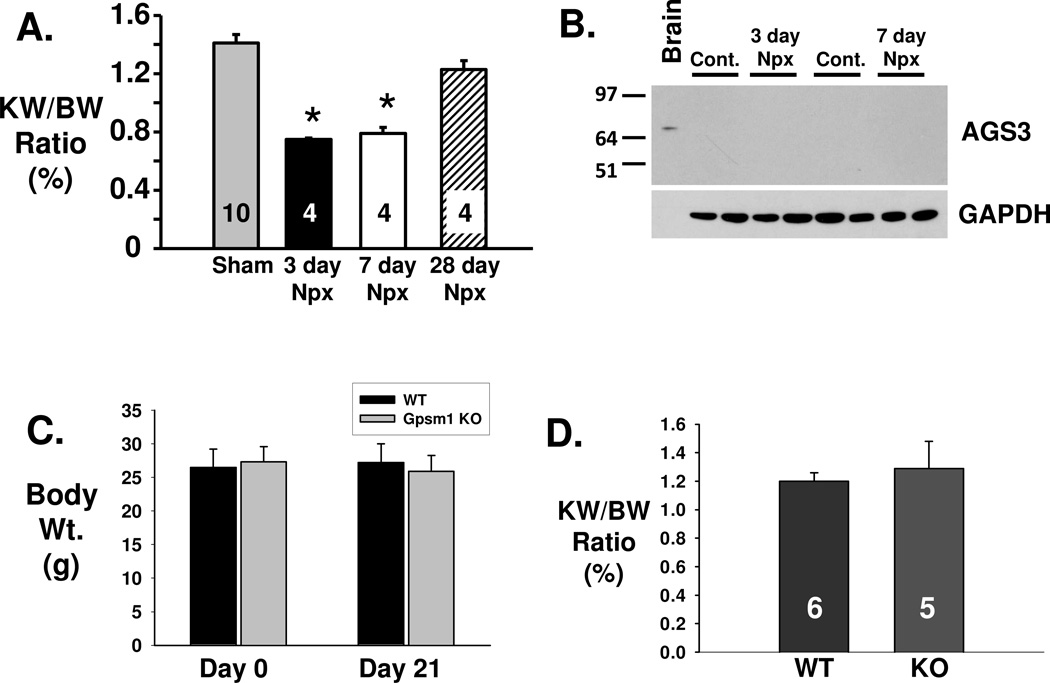Figure 6.
AGS3 does not play a role in the hypertrophic response of the kidney after unilateral nephrectomy. Male PCK rats (8 week of age) were either sham- or unilaterally nephrectomized and euthanized for kidney collection after 3, 7 or 28 days (n=4 for each time point). A) Kidney-to-body weight ratio is an index of the kidney size and were calculated at each time point. * P<0.05 significant difference between the sham-operated PCK rat kidney control group. B) Western blot analysis was performed using the kidney lysates (50 µg/lane) isolated from the PCK rats with (Npx) and without unilateral nephrectomy (Cont.). GAPDH was used as a loading control. Brain (1 µg) was used as a positive control for the detection of AGS3. Npx = unilateral nephrectomy. (C) and (D) Wild-type and Gpsm1-deficient mice were unilateral nephrectomized at day 0, and the remaining kidney was harvested 21 days later to measure kidney weight. Body weight was measured at multiple time points throughout the experimental period (C), including at the time of euthanization to calculate the kidney-to-body weight (KW/BW) ratio, which is an index of renal hypertrophy (D). The number of animals used in this experiment are shown in the bars.

